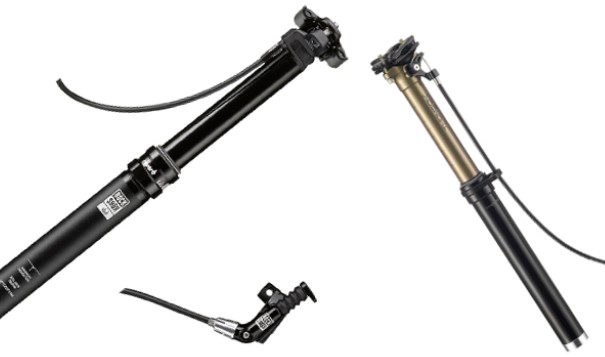Mountain biking, an adrenaline-packed sport, offers unparalleled excitement as riders conquer challenging terrains and steep descents. However, to fully embrace this exhilarating experience, a mountain biker needs more than just skill and courage; they need the right equipment. Among the game-changing innovations in mountain biking gear, dropper posts stand out as a revolutionary component, offering riders improved control and agility. In this comprehensive guide, we’ll delve into everything you need to know about dropper posts, from their basic function to the benefits they offer, types available, and tips on choosing the right one for your mountain biking needs.
What Exactly is a Dropper Post?

A dropper post in the world of cycling is a significant innovation, particularly impacting mountain biking, gravel riding, and to some extent, road cycling. This device is a telescoping seatpost that enables riders to swiftly adjust their saddle height while riding. This capability greatly enhances the riding experience by improving comfort, agility, and performance.
The key function of a dropper post is to lower the saddle during technical descents or complex maneuvers. With the saddle down, riders can shift their weight more effectively, move with greater ease, and maintain superior balance on the bike. This feature is especially valuable during steep descents, where a high saddle can impede obstacle navigation and control.
Dropper posts are powered by various mechanisms, chiefly cable-actuated and hydraulic systems. Cable-actuated droppers use a physical cable linked to a handlebar lever, while hydraulic droppers work through fluid pressure. Each has its merits: cable-actuated systems are typically less expensive, and hydraulic systems offer smoother operation and more fine-tuning options.
Beyond rough terrain, dropper posts offer advantages in comfort and efficiency even on flat or gently sloping terrain. Lowering the saddle can allow for a more relaxed riding position or enable the rider to exert more power during uphill climbs.
Benefits of Dropper Posts
Dropper posts bring a multitude of advantages to mountain biking, enhancing overall performance and experience. Key benefits include:
- Enhanced Maneuverability: The ability to quickly adjust saddle height allows riders to shift their center of gravity more effectively. This is especially beneficial on steep descents and technical sections, where balance and control are paramount.
- Improved Confidence: Lowering the saddle during challenging sections of the trail gives riders more room to maneuver, boosting their confidence to tackle difficult terrain.
- Reduced Fatigue: By facilitating an optimal riding position, dropper posts help in reducing muscle fatigue. This translates to longer, more comfortable rides.
- Versatility: Dropper posts are not limited to downhill or technical trails. They offer significant benefits for cross-country riders too, enhancing comfort and efficiency across diverse terrains.
Types of Dropper Posts
Dropper posts are categorized mainly into two types based on their actuation mechanism: cable-actuated and hydraulic.
- Cable-Actuated Dropper Posts: These are the more common and affordable type. They utilize a mechanical cable to control the saddle’s movement and are known for their reliability and cost-effectiveness.

- Hydraulic Dropper Posts: These use a hydraulic fluid system for saddle control, offering smoother and more precise adjustments. They typically provide greater travel distance than cable-actuated models and, while more expensive, deliver a premium experience.

Choosing the Right Dropper Post
Selecting an appropriate dropper post involves several considerations:
- Dropper Travel: The amount of vertical movement (travel) is critical. Downhill riders often prefer longer travel droppers for more flexibility, whereas cross-country riders might choose shorter travel for efficiency.
- Seatpost Diameter: Dropper posts come in various diameters. It’s super important to pick a diameter that matches your bike frame.
- Compatibility: Ensure the dropper post is compatible with your bike’s cable routing and remote lever.
- Rider Preference: Personal preference and budget play a significant role in deciding between cable-actuated and hydraulic models.
Installation and Maintenance
Proper installation and regular maintenance are vital for the optimal functioning and longevity of your dropper post. If you’re not confident in your mechanical skills, it’s advisable to seek professional help for installation. Regular upkeep, including cleaning and lubricating the internal components, is super important to maintain smooth operation and prolong the life of the dropper post.
Conclusion
Dropper posts have undeniably transformed the mountain biking landscape, offering riders an unmatched level of control, confidence, and versatility. Whether you’re a thrill-seeking downhill rider or a cross-country enthusiast, adding a dropper post to your bike can really improve your riding experience. As you explore new trails and push your limits, remember that the right equipment can make all the difference. For more insights and tips on mountain biking, visit Best Bike Parks, your ultimate resource for all things biking.







